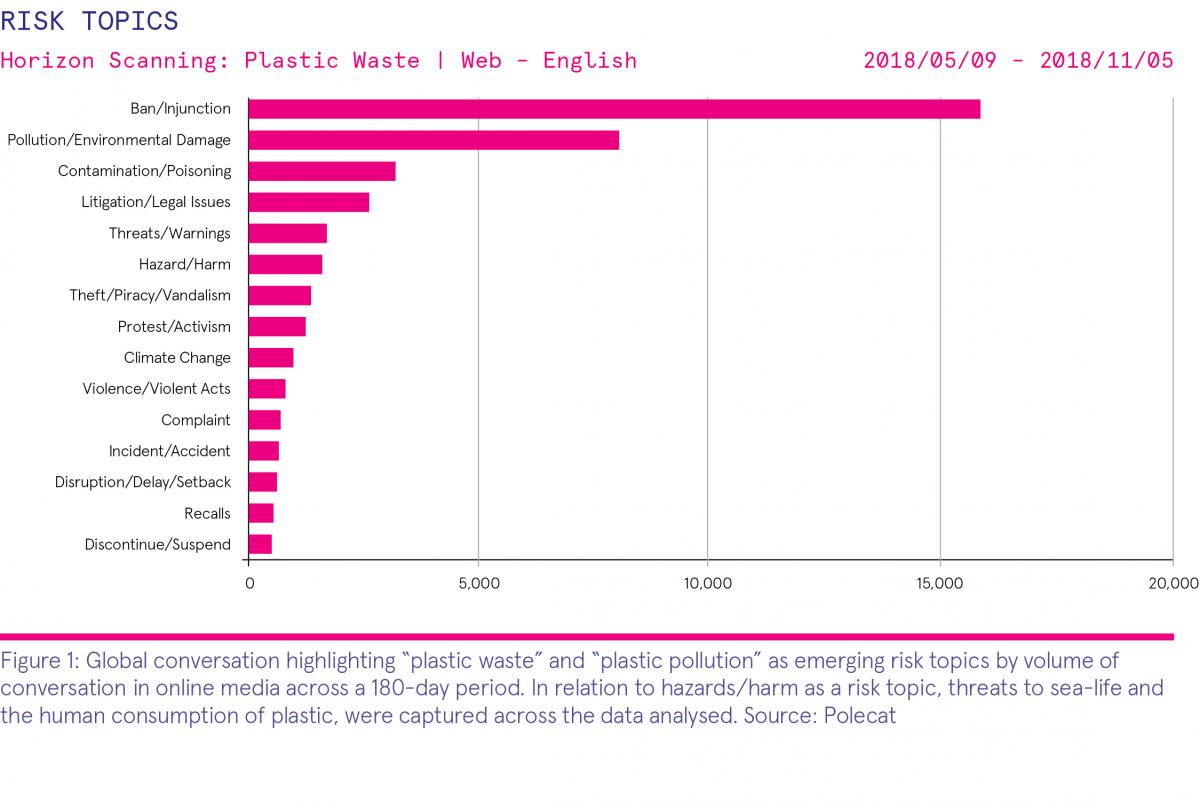Yasmin Crowther of Polecat Intelligence says Coca-Cola is the brand most in the firing line, but all companies will be caught in the widening net of concerns over plastic waste
UNEP has forecast that on our current trajectory, there will be more plastic than fish in the sea by 2050. Globally, we have generated 6.3bn tonnes of plastic waste – only 9% of which has ever been recycled. Some 12% has been incinerated and nearly 80% sent to landfill or simply discarded.
When plastic waste enters the environment, it sticks around for a long time: plastic bottles will be around there centuries later and fishing nets (which comprise almost half of ocean plastic debris) can float around as “ghost gear” for over half a millennium, with devastating ecosystem impacts[i].
The EU this month approved a directive banning single-use plastics by 2021
Societies around the world are increasingly aware of the environmental and ecological challenges, but the reality remains that plastic is an addictive material – cheap to produce, strong, light, versatile and hard to replace. We’re pretty hooked.
Governments around the world are seeking to address the challenge. The EU this month approved its directive banning single-used plastics by 2021, accompanied by calls to do the same in the UK and elsewhere. Countries like Indonesia, which are worst hit by plastic pollution, have also announced targets to reduce plastic waste to the oceans by 70% by 2025.

How did we get here? After all, we have known about the environmental impact of plastic waste for a long time. The BBC’s 2017 landmark series Blue Planet II was a turning point, followed up more recently by its documentary Drowning in Plastic. Both programmes have been seen by millions and shocked global audiences with terrible images of polluted oceans, rivers and wildlife maimed, choked and poisoned by plastic.
NGOs and activist investors have long been instrumental in highlighting the challenges and shining a spotlight on key contributors to single use plastic pollution. Our data shows well-known consumer brands such as Coca-Cola, Nestle, Tesco, Unilever, Starbucks, McDonald’s, Danone, Walgreen Boots, Walt Disney, Procter & Gamble and Pepsi remain in the front line of social media discourse and campaigns.
There are impassioned levels of consumer engagement and frustration at the pace of corporate action
Greenpeace’s spoof Coca-Cola Christmas ad last year saw a Christmas tree decorated with waste plastic, which also poured down the chimney, before the famous red lorry stopped to dump its load in the ocean, with a load belch from Father Christmas. Who knows what this Christmas will bring?
Our data shows that NGO voices continue to dominate the conversation far beyond the corporate response and that there are impassioned levels of consumer engagement and frustration at the pace of corporate and governmental action around the world. This month, too, UNEP and the Ellen MacArthur Foundation announced the New Plastics Economy Global Commitment, to which some 250 companies have signed up, including the commitment to ban single-use plastics and ensure 100% of plastic packaging can be easily and safely reused, recycled, or composted by 2025.

We also see signals of innovation and investment in new packaging solutions and financing to help incubate firms and technologies setting out to tackle the problem of ocean plastics.
All good, but deep in the data and deep in the oceans, we also discern a more disturbing issue where the science is still out. A proportion of conversation is focused on the chemicals released as plastics degrade, their toxic impact on sea-life (from plankton to sea-birds and coral) in even the most pristine locations of the world, and what all that means for the water and food we and our families drink and eat at the top of a plastic-rich food chain.
Earlier this year, the WHO’s Bruce Gordon announced a study into the presence of microplastics in bottled water. He told the BBC: “When we think about the composition of plastic, whether there might be toxins in it, to what extent they might carry harmful constituents, what actually the particles do in the body – there’s just not the research to tell us.” There have also been reports of microplastics found in 90% of table salt.
As single-use plastics are addressed, scrutiny will escalate of companies that are not on our high street
As the conversation evolves from single-use plastics in the sea, to micro and nano particles in our bodies, so does the exposure and expectation increase for food producers and food standards agencies, as well as more diverse companies such as clothing retailers and brands whose garments comprised of synthetic fibres release thousands of tiny particles into our waterways every day.
And as single-use plastics are addressed, so we see scrutiny set to escalate of those companies that are not on our high street, but further up the supply chain – the world’s biggest fishing companies, many of which have already signed up to UN Sustainable Development Goal 14, on Ocean Health, and plastics producers and packaging firms, which expect market growth of 4% to $180bn by 2025[i].
Single-use straws have caught the world’s attention and put some of the world’s largest consumer brands in the spotlight. Data suggests that progress made here is just the beginning of a wider net of issues and concerns that is still set to catch many more corporates in its mesh. Plastics touch every business in some way, and the challenge for boards and leaders is to fully analyse the significance of the issue for their operations and reputation, consider likely future scenarios, and ensure robust partnerships and initiatives are in place to deliver solutions.

Yasmin Crowther is vice president for strategic projects, sustainability and citizenship at Polecat Intelligence.
Ethical Corporation has just published a white paper to help companies tackle plastics waste, free to download here.
Main photo by chaiyapruek youpraser/Shutterstock

